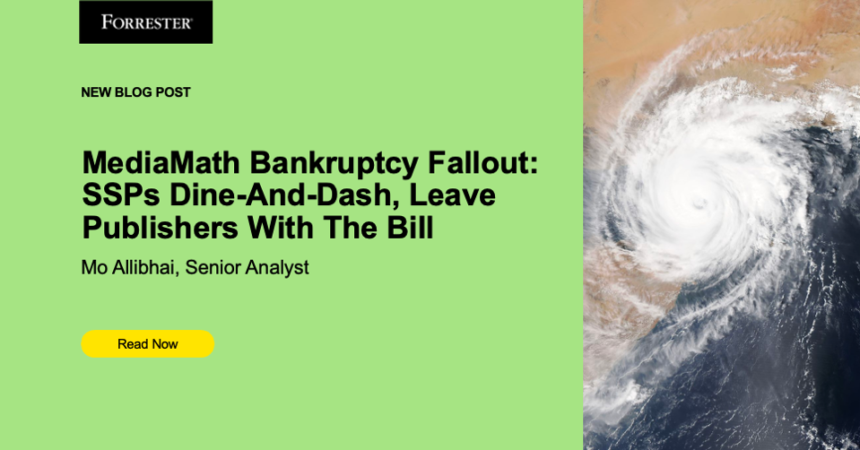Adtech is supposed to efficiently connect marketers with publishers — demand with supply. Marketers rely on a suite of vendors, including demand-side platforms (DSPs) to furnish brand-safe, fraud-free inventory, and publishers use supply-side platforms (SSPs) to match their unique content to relevant ads and buyers. Ads and cash travel one way; as the funds disperse en route to DSPs, SSPs, and programmatic data providers, publishers end up with a small percentage of the overall revenue. If, after ads have served, a DSP appears to have purchased fraudulent or inauthentic traffic, buyers will demand that an SSP “claw back” ad dollars from the offending publisher as a type of refund.
A buyer or SSP clawing back funds for valid, transacted ads is nearly unheard of, yet that’s exactly what happened this week when publishers learned that multiple SSPs would claw back funds related to MediaMath’s banktruptcy. In this instance, when the DSP essentially defaulted on a line of credit extended by the SSP, the SSP decided to pass the debt on to publishers, skipping out on the check for a meal that everyone hungrily ate. It’s an inappropriate use of claw-back mechanisms (which seek to redress fraud and misuse) and a good reason for publishers to revisit contracts with “sequential liability” clauses.
SSPs already face public perception that they are rife with scammers, lax when it comes to standards and safety, and generally hypocritical when it comes to tasting their own medicine. The last thing they need is more friction that leads to duplication and inefficiency. So how should the industry move forward?
- Publishers: Know your partners. In recent years, direct publisher buys faded to the background as programmatic revenues increased. That trend is slowly reversing, as direct buys limit exposure to claw-backs and malicious ads. They also allow publishers to capitalize on knowledge of their audience/customer and improve yield/ROI for both parties. This moment could be an inflection point for publishers and their programmatic fill strategies.
- Vendors: Know your customer. In adtech, this means the buyer and the seller. While many agencies and brands use multiple demand platforms, there is a great deal of market concentration among brand-safe publishers, creators, and IP. The best publishers command huge amounts of monetizable attention, bolstered by a mountain of exclusive first-party data. Most of all, they transact in trust (to command high CPMs and a large audience), but that was just broken by their SSPs in a big way.
- Ad networks: Know your market position. It is unseemly for established, well-funded players to pass unpaid bills on to smaller organizations that employ creatives rather than technologists — even if it meets fiduciary requirements. When the entire value proposition justifying SSP markup is to “manage the programmatic side” for publishers, a catastrophic failure to mitigate obvious risk brings that management capability into question. Moreover, it’s ethically questionable, at best, to unilaterally take on risk yet foist the consequences exclusively onto others.
If you’d like to talk more about ad monetization and inventory partnership strategies, schedule an inquiry or guidance session today.








